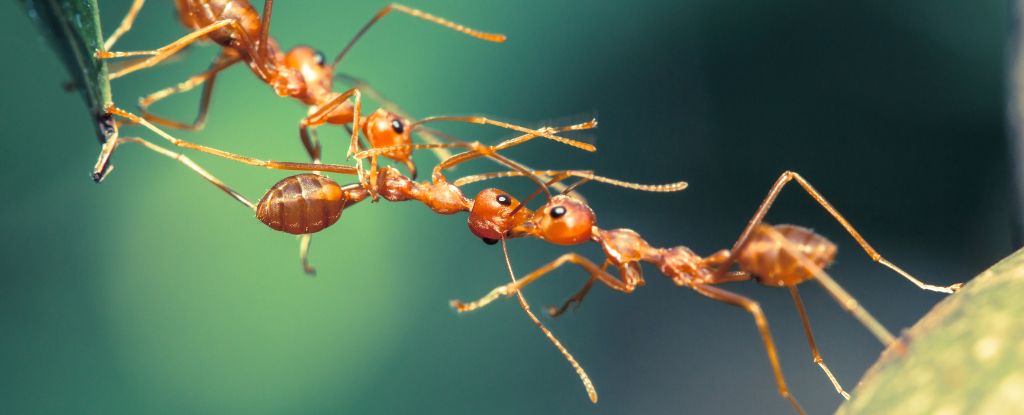
Researchers have discovered that weaver ants demonstrate a remarkable ability to work together effectively, challenging the long-held belief that larger teams diminish individual performance. In a study published in Current Biology, scientists found that as more weaver ants joined a pulling task, not only did the total force exerted increase, but so did the effort contributed by each individual ant.
Revisiting Team Dynamics
This phenomenon contradicts the Ringelmann effect, a principle identified by French engineer Max Ringelmann in the late 19th century. He observed that the average effort of individuals in a group diminishes as team size grows, primarily due to difficulties in coordination and a tendency for individuals to exert less effort when part of a larger group.
In their research, scientists focused on weaver ants, specifically Oecophylla smaragdina, known for their extraordinary teamwork in constructing nests. These ants work together to pull living leaves, forming chains by gripping each other’s waists. The study aimed to analyze whether these chains experienced the Ringelmann effect during their team efforts.
Findings from the Study
The team set up an experiment in which groups of weaver ants pulled an artificial leaf attached to a force meter, recording their collective force output in real-time. Contrary to expectations, as the number of ants increased, both the total force and the per-ant force also rose. This indicates that weaver ants not only avoid the Ringelmann effect but are also “superefficient” in their teamwork.
The study examined the organization of these ants within the chains, revealing that performance peaked when they formed a single, continuous chain rather than several shorter ones. Ants positioned at the rear adjusted their posture to provide passive resistance, while those in the middle and front engaged in active pulling, suggesting a division of labor that maximized efficiency.
The researchers introduced a concept they termed the “force ratchet,” explaining that the weakest link in the pulling chain is the grip of the ants on the ground. By working in a chain, the rear ants enhance ground contact and minimize slipping, allowing the leading ants to exert greater force. This division of labor helps maintain overall team effectiveness.
The implications of this research extend beyond understanding ant behavior. It raises questions about how teams in various fields, including robotics, can improve performance through better coordination and organization. Many robotic teams currently experience linear scaling, where doubling the number of robots only doubles the output—a scenario that does not reflect the superefficiency observed in weaver ants.
Future experiments will explore variables such as the slipperiness of surfaces and the weight of objects to further validate the force ratchet hypothesis. The findings challenge the idea that larger teams always result in diminished returns, suggesting that under certain conditions, more can indeed be better.
This research not only highlights the exceptional capabilities of weaver ants but also offers valuable insights for fields such as swarm robotics, where enhancing team dynamics could lead to breakthroughs in collaborative tasks.
“Sometimes, when it comes to teamwork, more is different. And for some animals at least, more really is better,” said Chris R. Reid, ARC Future Fellow at Macquarie University.
The study underscores the importance of understanding collective behavior in nature, with the potential to inform advancements in technology and collaborative systems in human contexts.
This article is based on research conducted by Chris R. Reid and Daniele Carlesso at the Max Planck Institute of Animal Behavior.






